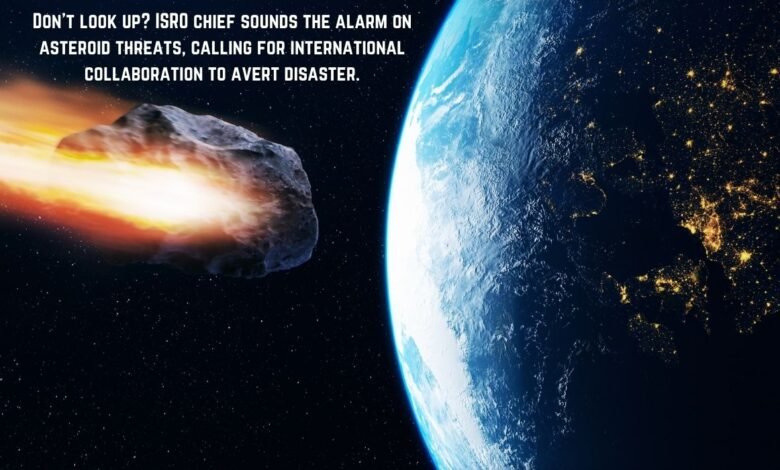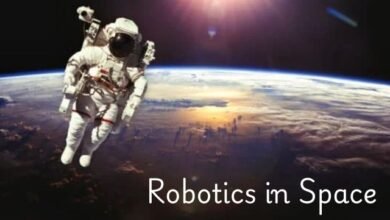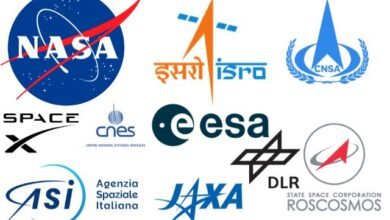Asteroid Threat: ISRO Chief Warns Of Real Possibility, Calls For Global Preparedness
Asteroid Threat: ISRO Chief warns of real possibility and calls for global preparedness to address potential dangers.

Asteroid Threat are small rocky bodies that revolve around the Sun, and most of them are found in the asteroid belt between Mars and Jupiter. These celestial objects range in size from small stones to large rocks thousands of kilometers long. Most asteroids remain in stable orbits, but some can be perturbed by gravitational forces that could put them on a collision course with Earth.
The danger posed by asteroids is quite big because a lot of energy is released at the time of impact. Example: Asteroid impact that occurred almost 65 million years ago, which wiped out the dinosaurs. This catastrophic event released energy equivalent to billions of atomic bombs, which caused widespread fires, tsunamis, and climate disruptions.
Key facts about asteroids and their Asteroid threats include:
- Asteroids usually come from the asteroid belt between Mars and Jupiter.
- They can be tiny pebbles or huge rocks hundreds of kilometers wide.
- Gravitational forces can change their paths, sometimes sending them towards Earth.
- An asteroid impact releases a lot of energy, causing huge damage.
- About 65 million years ago, an asteroid impact likely caused the dinosaurs’ extinction.
- Smaller asteroid impacts happen more often but are less destructive.
Though large asteroid impacts are rare, their potential for widespread destruction necessitates vigilant monitoring and preparedness. Statistically, significant asteroid impacts are infrequent but not impossible. According to scientists, Earth experiences a major impact event approximately once every few million years. However, the possibility of smaller, yet still dangerous, asteroids colliding with Earth is more common, occurring every few decades to centuries.
Understanding the nature and frequency of asteroid is essential for developing effective strategies to mitigate their potential impact. By studying past events and monitoring near-Earth objects, scientists aim to better predict and prepare for future asteroid encounters, safeguarding our planet from these cosmic hazards.
ISRO Chief’s Warning and Its Significance
The recent warning from the ISRO Chief about the real possibility of an asteroid impact has sent ripples through the scientific community and beyond. Dr. S. Somanath, the current Chairman of the Indian Space Research Organisation (ISRO), has emphasized the urgent need for global preparedness against potential threats. As the leader of one of the world’s foremost space research organizations, Dr. Somanath’s alert carries substantial weight and underscores the gravity of the situation.
Dr. Somanath’s warning is not without basis. Recent studies and observations have highlighted an increasing number of near-Earth objects (NEOs) that pose a potential threat to our planet. Advances in technology and improved detection techniques have allowed us to identify these objects with greater accuracy, leading to a heightened awareness of the risks they pose. This context makes the ISRO Chief’s warning particularly significant, as it is grounded in the latest scientific research and findings.
The importance of heeding such warnings cannot be overstated. Asteroids, while often depicted in popular media as a distant threat, have the potential to cause catastrophic damage. Historical evidence, such as the impact that led to the extinction of the dinosaurs, serves as a stark reminder of the potential consequences. Ignoring these warnings could result in severe repercussions, including loss of life and extensive environmental damage.
Dr. Somanath’s call to action is a crucial reminder of the need for international collaboration and proactive measures. Global preparedness involves not only monitoring and tracking potentially hazardous asteroids but also developing strategies for deflection or mitigation. By taking these warnings seriously, we can work towards safeguarding our planet from such existential threats.
Global Preparedness: What Needs to Be Done
In the face of a potential asteroid impact, global preparedness is paramount. The threat of an asteroid collision is not confined to any single nation; it is an issue that transcends borders, necessitating a unified international response. The following key steps outline what needs to be done to ensure effective global preparedness:
1. International Cooperation: The cornerstone of global preparedness is robust international cooperation. Space agencies, governments, and scientific communities must work together, sharing data and resources to develop comprehensive strategies. Establishing international agreements and protocols will facilitate coordinated efforts in asteroid detection and deflection missions.
2. Early Detection Systems: Implementing advanced early detection systems is critical. These systems, equipped with cutting-edge technology, can identify potential threats well in advance. Enhanced surveillance and monitoring networks will enable timely detection, providing the necessary lead time to execute deflection or mitigation strategies.
3. Deflection Missions: Developing and testing deflection missions is a proactive approach to mitigating the threat of an asteroid impact. These missions involve altering the course of an asteroid to prevent collision with Earth. Techniques such as kinetic impactors, gravity tractors, and nuclear devices are being explored and refined to enhance our deflection capabilities.
4. Emergency Response Plans: Comprehensive emergency response plans are essential. These plans should include evacuation protocols, disaster management strategies, and public communication frameworks. Training and simulations will ensure that response teams are prepared to act swiftly and efficiently in the event of an impending impact.
5. Public Awareness and Education: Raising public awareness and education is vital for fostering a culture of preparedness. Informing citizens about the potential risks and the measures being taken to mitigate them will enhance community resilience. Public engagement initiatives and educational programs can play a significant role in building informed and prepared societies.
Timely action and collective effort are imperative to mitigate the threat of an asteroid impact. By embracing these strategies and fostering global collaboration, we can enhance our preparedness and safeguard our planet from this existential threat.
- ‘358 Days on the Red Planet’ Mission
- Lunar Swirl Secrets: Hidden Moon Feature Explained by Volcanic Past?
- Space Junk: What is it and how does it affect us
How Individuals Can Stay Informed and Prepared
Staying informed about potential threats is crucial for individual preparedness and public safety. Reliable sources of information are essential to keep abreast of new developments and potential hazards. The following suggestions offer practical steps individuals can take to stay informed and prepared:
Reliable Sources of Information:
- Space Agency Websites: Websites of space agencies such as the Indian Space Research Organisation (ISRO), NASA, and the European Space Agency (ESA) provide up-to-date information on asteroid tracking and potential threats.
- Scientific Publications: Reputable journals and publications like Nature and Science often feature studies and articles on near-Earth objects (NEOs) and asteroid-related research.
- News Outlets: Trusted news organizations frequently report on significant findings and alerts issued by space agencies and researchers.
- Mobile Apps: Apps like NASA’s Eyes on Asteroids offer real-time tracking and notifications about asteroids’ paths and potential impacts.
Importance of Public Awareness and Education:
Public awareness and education about threats are vital for fostering a culture of preparedness. Knowing the potential risks and the scientific methods used to track and mitigate these threats can empower individuals to take proactive steps. Educational programs, community workshops, and school curricula can play a significant role in spreading knowledge about asteroid hazards and safety measures.
Emergency Preparedness Tips:
- Develop an Emergency Plan: Create a clear plan that outlines actions to take in the event of an asteroid impact. This should include evacuation routes, communication strategies, and a list of essential supplies.
- Know Your Shelter Options: Identify safe places in your home or community where you can take shelter during an impact. Basements, interior rooms, and reinforced buildings are preferable.
- Stay Informed: Regularly check reliable sources for updates and alerts about threats. Sign up for notifications if available.
- Assemble an Emergency Kit: Prepare a kit with essential items such as water, non-perishable food, medical supplies, flashlights, and batteries.
- Participate in Drills: Engage in community drills and simulations to practice your emergency plan and improve your readiness for a real event.
By staying informed and prepared, individuals can contribute to their own safety and the resilience of their communities in the face of potential threats.



